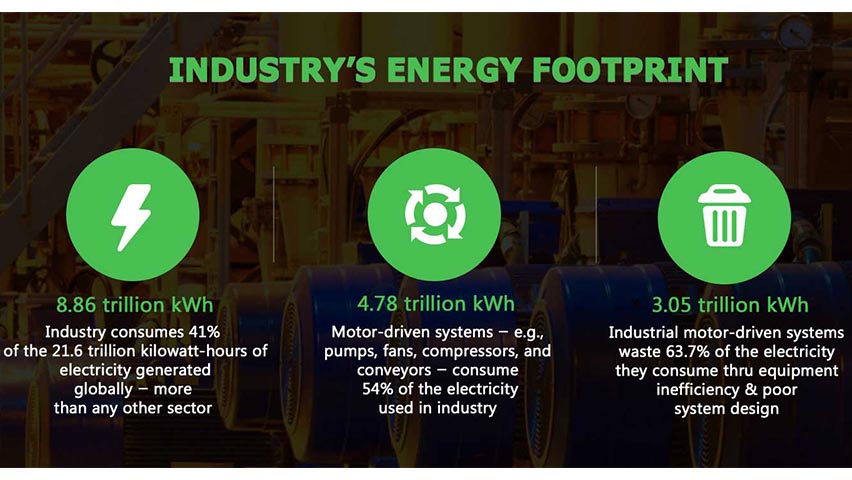McKinsey reports that up to five-sixths of the potential energy savings remains untapped. This means that industrial energy efficiency measures can help companies reduce their energy expenses by up to 32% which all goes straight to the bottom line.
Listed below are seven Industrial energy efficiency measures that can help improve your profitability:
- Energy efficiency decreases your energy use and associated charges: The purchasing cost associated with unproductive energy gets removed from the total energy cost when you reduce the amount of energy waste. Energy savings might differ depending upon the industry you are in.
- Energy efficiency decreases demand, lowering your utility’s electric rates: Electricity rates are directly proportional to the demand. A grid-wide decline in customer demand for electricity (due to adoption of energy efficiency measures) will force the utilities to lower the electric rates, further reducing your energy costs.
- Energy efficiency reduces electric utilities’ need to add generation capacity, keeping your electric rates low: Increased demand for electricity forces utilities to invest in additional generation capacity. Regulators allow the utilities to recover such extra capital costs by way of increased utility rates. When the demand is less, utilities can afford to postpone (or eliminate) their capital expenditure thus maintaining (or even lowering) your utility rates.
- Energy efficiency increases productivity, improves worker safety, minimizes waste, reduces pollutant emissions, and decreases maintenance costs: “Soft” energy efficiency savings might be difficult to quantify, but the truth is that these savings can turn out to be more substantial than your other energy savings. For instance, Loftness et al. found that industrial energy efficiency projects also improve worker comfort and safety, improving morale and reducing employee turnover by up to 90%[1]. Other benefits included enhanced public image, decreased defect rates, increased equipment life, and capital expenditure avoidance
- Energy efficiency generates new revenue streams when sold through energy efficiency resource markets: Energy efficiency resource markets and auctions hosted by states with deregulated electric utilities create new revenue streams for companies participating in them. This additional revenue can counterbalance the additional costs of energy efficiency measures taken by these companies.
- Energy efficiency lowers wholesale capacity pricing by increasing the volume and variety of available resources: When energy efficiency resources are included in the bids in wholesale capacity auctions, the clearing prices there tend to be lower versus those auctions which do not include energy efficiency resources. This is due to the factoring of energy efficiency credits in the clearing price which, in turn, will positively impact your utility rates.
- Energy efficiency increases consumers’ demand for your products: Passing on the energy cost savings to your customer will, in all probability, expand your market and increase your customer base as more customers would be willing to purchase from you at the reduced price. Energy efficiency measures provide a major boost to your brand image apart from increasing your sales numbers in environment friendly demographics.
Energy-efficiency is at the forefront in achieving both competitiveness and reduction in greenhouse emissions. By adopting energy-efficient technologies and standards, companies can not only save on energy but can also reduce maintenance costs, optimize operations and improve motor-driven system asset performance. To learn more, download our whitepaper on Industrial Energy Efficiency.
[1] V. Loftness, V. Hartkopf, B. Gurtekin, & D. Hansen, “Linking Energy to Health & Productivity in the Built Environment,” in Proceedings of the 2003 Greenbuild Conference.


